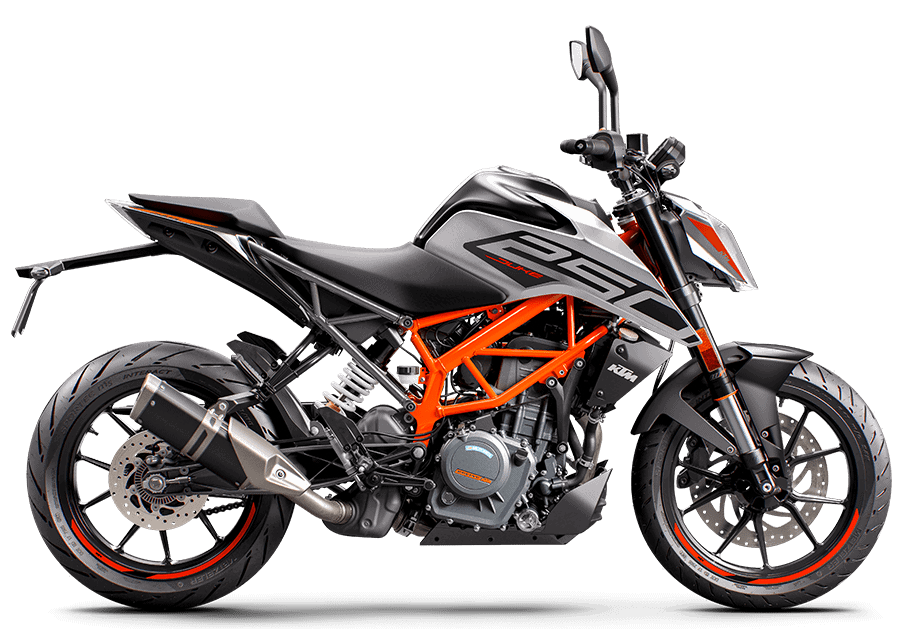how many volts is a motorcycle battery?
12 Volts is the standard voltage for a battery if you own a modern motorcycle. 6-volt batteries were used in motorcycles manufactured before 1960.
I’m not just a motorcycle passionate, I have a college degree in electronics and have worked in the telecommunication industry for the last 20 years. So when I talk about electricity and electronics, I have excellent knowledge and experience.
Motorcycle batteries are crucial to keeping your bike in good working order. Like a car, a motorcycle needs a battery to start the engine and power the lights. Motorcycle batteries are usually lead-acid batteries, which means they have lead plates submerged in a sulfuric acid solution.
Table of Contents

There are two common types: 6-volts and 12-volts.
- 6-volt batteries were once the standard for motorcycles; they were used in older motorcycles. They are smaller and lighter than 12-volt batteries. However, 6-volt batteries cannot provide as much power as 12-volt batteries, so they are not as popular as they once were.
- 12-volt batteries are now the most common type of motorcycle battery. They are larger and heavier than 6-volt batteries but provide more power. 12-volt batteries are also more vibration-resistant, making them ideal for motorcycles that travel at high speeds.
Motorcycle batteries have increased in voltage from 6 volts to 12 volts. A 12-volt battery on a motorcycle typically has a voltage of around 12.5 volts when in good condition. This means that the chemical reaction between components produces 12 volts of electricity. The voltage can range from 6 volts to 12 volts, depending on the accumulator type and the engine size. Let’s assume you are not a bike collector. Then the voltage of your battery should be 12 volts.
What Are the Different Types of Batteries?
There are four main types of motorcycle batteries – WET, AGM, GEL and Lithium batteries. Each has advantages and disadvantages, so choosing the right one for your bike is essential.
- Lead-acid batteries are the most common type of motorcycle battery. They’re filled with distilled water and sulphuric acid, which gives them their name. Wet batteries are cheap and easy to find but require regular maintenance. You must check the water level regularly and top it up if it gets low. Wet batteries also tend to leak, so you must be careful where you store them.
- AGM batteries are more expensive than wet batteries but don’t require any maintenance. AGM batteries are sealed, so there’s no risk of them leaking. They’re also more resistant to vibration, making them a good choice for bikes ridden off-road.
- GEL batteries are the most expensive type of motorcycle battery, but they have a number of advantages. GEL batteries are sealed, so there’s no risk of them leaking. They’re also more resistant to vibration, and they have a longer lifespan than wet or AGM batteries.
- Lithium batteries are a new type of battery; they are sealed and contain mainly lithium iron phosphate. They are way lighter than stock battery and contain more electrical energy. The only downside is that they can cause fire if punctured or overcharged. Contrary to lead-acid battery, they need a smart charger to control the state of charge.
Knowing the type of your battery is very important if your battery charger has a manual selector for the battery type. You must select the correct one to charge them correctly.
How to Tell Whether Your Motorcycle’s Battery Is 6V or 12V?
When determining if motorcycle batteries are 6V or 12V, you will need to take a few things into consideration.
- First, read your instruction manual; there is a good chance the motorcycle battery voltage will be mentioned there.
- Next is the size or the marking on the battery. A 6V battery is typically much smaller than a 12V, and you will typically find the voltage written on the battery.
- Finally, you will need to check the voltage by doing a battery test with a voltmeter (See below).


How Should I Test My Motorcycle Battery’s health ?
As battery technology advances, the ways to check a battery‘s health are becoming more sophisticated. However, a few tried-and-true methods for checking accumulator charges work with most types of batteries.
The first test to check battery charge is to use a voltmeter. A voltmeter is a device that measures the voltage of a circuit. To use a voltmeter to check battery charge, simply connect the voltmeter to the positive and negative terminals. A fully charged battery typically shows a voltage of 12.6 volts or higher.
Another way to check battery charge is to use a hydrometer. A hydrometer is a device that measures the specific gravity of a liquid. To use a hydrometer to check battery charge, you will need to remove the accumulator cell caps and insert the hydrometer’s probe into the battery cell. A fully charged accumulator will have a specific gravity of 1.265 or higher.
Finally, you can also use a load test to check the accumulator charge. A load test is a test that measures the ability of a battery to provide a given amount of current for a specific period of time. To use a load test to check the accumulator charge, you must connect a load tester to the battery and then run the tester according to the manufacturer’s instructions.
How do I test if I have a bad battery?
To measure the voltage of a motorcycle battery, you will need a digital voltmeter and do the following tests.
- First thing, make sure that the battery is disconnected from the motorcycle, or you will not measure the correct dc voltage.
- Set the voltmeter to volts dc to get the correct voltage reading.
- Connect the voltmeter positive lead to the accumulator Positive (+) posts. (Positive cable should be Red)
- Connect the negative lead to the battery negative (-) post. (Negative cable should be black)
- If you reverse your leads, the voltage will simply indicate negatively. You cannot damage your voltmeter or change the condition of the battery.
- Once the leads are connected, turn on the voltmeter and measure the actual voltage.
- Nominal voltage should be around 12.5 volts.
- Low voltage, under 12 volts, indicates a weak battery.
What Is the Life span of a Motorcycle Battery?
It can last anywhere from two to five years, depending on the type of battery, how it’s used, and how well it’s maintained.
However, several factors can affect the life of a motorcycle battery, including:
- Temperature: Extreme temperatures can shorten the life of a motorcycle battery. Hot weather can cause the accumulator to overheat, while cold weather can cause the battery to freeze.
- Vibration: Vibration can damage the internal structure of a battery, causing it to fail prematurely.
- Electrical Load: Frequent starting and stopping of the engine can put a strain on the battery, causing it to wear out faster.
- Age: As a battery ages, it loses its ability to hold a charge. This can shorten the life of the battery.
- Maintenance: Proper maintenance is essential to prolonging its life. This includes regularly cleaning the accumulator terminals and inspecting the battery for signs of damage.

How Can You Take Care of Your Motorcycle Batteries?
Maintaining a motorcycle battery is important to prolong the life of the accumulator and keep your motorcycle running smoothly. Here are a few tips on battery maintenance:
- Check it regularly for corrosion and clean the battery terminals as needed.
- Keep the battery charged. A battery that is regularly left discharged will sulphate and shorten its lifespan.
- Avoid extreme temperatures. Batteries can be damaged by both extreme heat and extreme cold.
- Store it in a cool, dry place when not in use.
- It could be a good idea to use a trickle charger to maintain the full charge of your battery while not using it.
By following these simple tips, you can help extend the life of your motorcycle battery and avoid battery problems.
How Many Volts Is a Harley Davidson Motorcycle Battery
Harley-Davidson motorcycles are seen as a symbol of luxury and prestige. If you own one, you are seen as being part of the upper class. The brand was founded in 1903 in Milwaukee, Wisconsin, and managed to stay afloat during America’s Great Depression. Given their impressive design and performance, people often wonder what kind of battery is used to power these bikes.
Harley Davidson motorcycle batteries are very similar to those used in other motorcycles. Although Harley Davidson may recommend a specific battery, any 12-volt battery with a 12-volt system will suffice. The complete battery specifications for most Harley Davidson are 12 volts, 19 amps per hour, and 270 CCA.
Conclusion
Overall, there are many factors to consider when choosing a new battery. One important factor is the voltage of the battery. There are two standard voltages for motorcycle batteries, 6v and 12v. Each has its advantages and disadvantages.
You can test the health of your motorcycle battery by using a voltmeter. A fully charged, healthy battery should read as 6.3V or 12.6V, depending on if it is a 6V or 12V battery. To avoid battery problem and prevent having to buy a new one, attentive owners will regularly check the motorcycle’s charging system and perform routine maintenance. With proper care, a typical motorcycle battery should last around four years.
FAQ
Can We Use a 6V Battery In Place Of A 12V Battery?
You cannot use a 6-volt battery if your original battery is 12 volts. The main reason is that the 6v accumulator will not provide enough power to start the motorcycle. Additionally, the 6v accumulator may not be able to provide enough power to run the motorcycle’s electrical system, which can lead to problems. Newer motorcycles need higher voltage to operate correctly and may detect battery issues even if you connect a 6-volt battery.
Why do older bikes use 6-volt systems?
Battery’s voltage for motorcycles typically comes in 12-volt, but old lead acid batteries used in the first bike’s electrical system were 6-volt varieties. The 12-volt system is generally used for starting the engine, while the 6-volt batteries are primarily used for accessories such as lights.
Can Your Motorcycle Run Without A Battery?
A motorcycle can run without a battery. But with a dead battery, forget the electric starter. You will need to bump start your motorcycle or use another healthy motorcycle battery to boost your flat battery.
Will A Motorcycle Charger Charge A Car Battery?
A motorcycle charger will charge a car battery but will take longer. Car batteries require more power to charge than motorcycle conventional batteries.
How Many Volts Should a Motorcycle Battery Show?
The voltage of a fully-charged AGM battery is 12.8 to 13.0 volts. The voltage of an AGM battery that is 75% to 100% charged is 12.5 to 12.8 volts.

Meet Simon, the 46-year-old aficionado behind YourMotoBro. With a lifelong passion ignited by motocross dreams and a Canadian Tire bicycle, Simon’s journey has been nothing short of extraordinary. From coaching underwater hockey to mastering muddy terrains, he’s an authority in thrill and adventure. Certified as an Off-Road Vehicle Excursion Guide and trained in Wilderness First Aid, Simon’s love for bikes is as diverse as his collection—from a robust BMW GSA R1200 to the memories of a Harley Davidson Night Train. By day a respected telephony consultant, by night a motorcycle maestro, Simon’s tales are a blend of expertise, resilience, and undying passion. ?️✨
